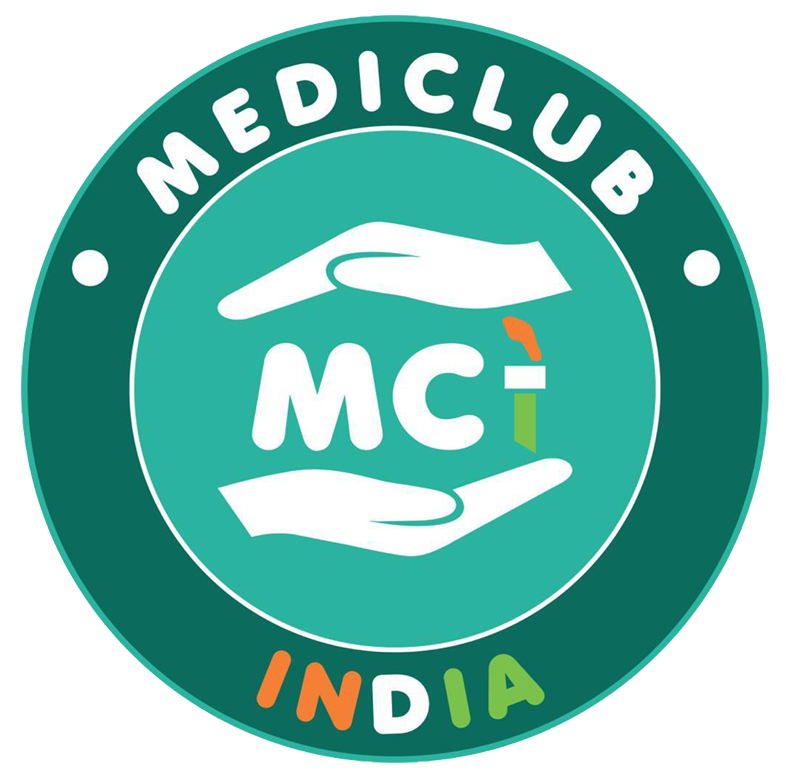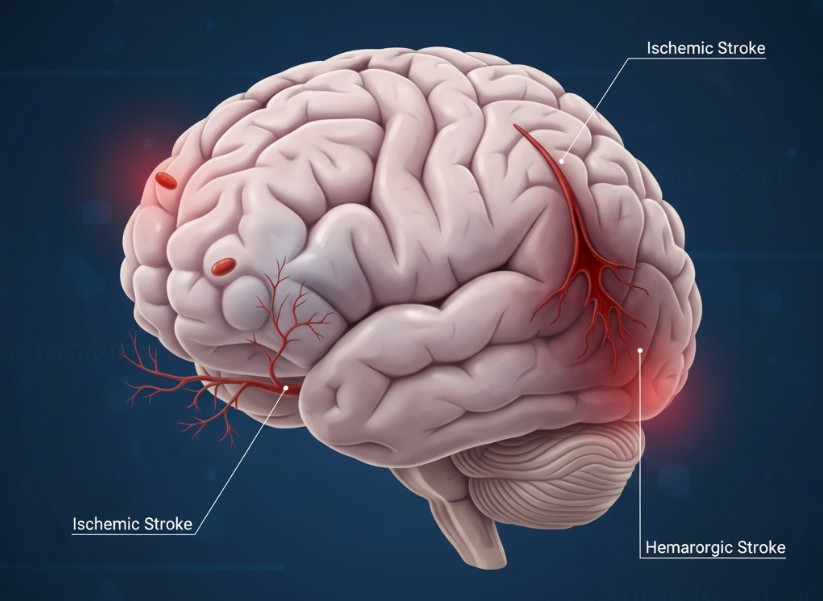What are the Different Treatment Options in Stroke (Paralysis)?
Stroke, often called brain attack, occurs when blood flow to a part of the brain is interrupted, leading to brain cell death. This can result in paralysis, speech problems, memory loss, or even life-threatening complications. Globally, stroke is one of the leading causes of disability, and in India, it affects millions every year. The good news? With timely stroke treatment and advanced therapies, many stroke patients can recover and lead fulfilling lives. Knowing about different treatment options—ranging from emergency interventions to rehabilitation therapies—can make a life-saving difference.
If you are searching for the best stroke doctor in Faridabad, Dr. Kunal Bahrani is a renowned neurologist specializing in acute stroke management, neurorehabilitation, and advanced therapies, offering world-class stroke care with a multidisciplinary approach.
This article will cover:
- Acute stroke treatment options
- Hospital-based stroke management
- Rehabilitation therapies (modern & traditional)
- Importance of stroke units
- FAQs about stroke treatment
Acute Stroke Treatment – The Golden Hours Matter
The first few hours after a stroke are critical. Known as the golden period, this time window determines how much brain damage can be reversed.
- Intravenous Thrombolysis (Clot-Dissolving Medicine)
- This involves giving a clot-busting drug (tPA) through a vein.
- Works best if administered within 4.5 hours of symptom onset.
- Helps dissolve the clot and restore blood flow, reducing paralysis and disability.
- Eligibility: Not every patient qualifies (e.g., those with bleeding risk or delayed arrival may not be candidates).
Why time matters: Every minute of delay leads to millions of brain cells dying. Immediate hospital admission is crucial.
- EVT (Endovascular Treatment / Mechanical Thrombectomy)
- A minimally invasive procedure where doctors use a catheter to remove the clot directly from a blocked brain artery.
- Works for large vessel occlusion (LVO) strokes.
- Can be done up to 24 hours from onset in selected patients.
- Provides remarkable recovery rates if done in time.
💡 Both thrombolysis and thrombectomy have revolutionized stroke care, reducing paralysis and improving survival rates.
In-Hospital Stroke Treatment – Beyond Emergency Care
Once admitted, patients need specialized hospital-based treatment to stabilize their condition and prevent complications.
Importance of Stroke Units
Research shows that treatment in dedicated stroke units significantly improves recovery and reduces long-term disability.
A stroke unit includes:
- Neurologists – lead treatment and decision-making.
- Neurophysiotherapists – help restore movement and strength.
- Speech therapists – assist with communication and swallowing issues.
- Occupational therapists – train patients to regain independence in daily activities.
- Psychologists – support mental health during recovery.
- Social workers – guide patients and families about resources, care, and rehabilitation options.
Hospital Stroke Care Includes:
- Monitoring blood pressure, sugar, and oxygen levels.
- Preventing secondary complications like pneumonia, infections, or bed sores.
- Managing brain swelling, seizures, and pain.
- Initiating early rehabilitation as soon as the patient is stable.
Rehabilitation in Stroke – Regaining Life and Independence
Stroke recovery is not just about survival—it’s about restoring quality of life. Rehabilitation plays a central role and may continue for months or even years.
- Robotic Rehabilitation
- Advanced devices like robotic gloves, robotic arms, and robotic exoskeletons help retrain movement.
- Provide repetitive, precise exercises that accelerate brain recovery.
- Virtual Reality (VR) Based Therapy
- Engages patients in interactive digital exercises.
- Boosts motivation, coordination, and motor skills.
- Injection Botox for Spasticity
- Many stroke patients develop stiffness and tightness in muscles (spasticity).
- Botulinum toxin injections help relax these muscles, improving mobility and reducing pain.
- rTMS Therapy (Repetitive Transcranial Magnetic Stimulation)
- A non-invasive therapy that stimulates the brain using magnetic fields.
- Promotes brain plasticity and helps in motor, cognitive, and speech recovery.
- Conventional Rehabilitation
- Physiotherapy – improves strength, balance, and mobility.
- Speech therapy – restores language and swallowing.
- Occupational therapy – enhances independence in everyday tasks.
A multidisciplinary rehabilitation approach ensures holistic recovery, addressing physical, emotional, and social challenges.
Difference Between Acute Treatment & Rehabilitation
| Aspect | Acute Stroke Treatment | Rehabilitation |
| Timeframe | First hours (up to 24 hrs) | Weeks to years after stroke |
| Goal | Restore blood flow, save brain cells | Regain independence & function |
| Methods | Thrombolysis, thrombectomy | Physiotherapy, robotics, VR, Botox, rTMS |
| Focus | Emergency management | Long-term quality of life |
Why Consult Dr. Kunal Bahrani – Best Stroke Doctor in Faridabad?
When it comes to stroke care, timely and expert intervention is life-saving. Dr. Kunal Bahrani, one of the leading neurologists in Faridabad, is highly experienced in:
- Acute stroke management (IV thrombolysis & EVT)
- Running dedicated stroke units for comprehensive hospital care
- Advanced rehabilitation therapies like robotics, VR, Botox, and rTMS
- Providing personalized recovery plans with a holistic, patient-focused approach
With his expertise, many stroke patients in Faridabad have regained mobility, communication, and confidence to live independently again.
FAQs About Stroke Treatment
- What is the best immediate treatment for stroke?
If the stroke is due to a clot (ischemic stroke), IV thrombolysis within 4.5 hours or mechanical thrombectomy within 24 hours (for large vessel occlusions) offers the best outcomes.
- Can paralysis from stroke be reversed?
Yes, many patients regain movement with early treatment and structured rehabilitation, though the extent of recovery varies.
- Why is stroke rehabilitation important?
Rehabilitation helps the brain re-learn lost functions, improving mobility, speech, and independence in daily life.
- What is rTMS therapy in stroke recovery?
It’s a non-invasive brain stimulation technique that improves motor recovery, cognitive functions, and speech in stroke patients.
- How do I know if I’m eligible for clot-busting treatment?
Eligibility depends on timing, type of stroke, and patient health profile. Only a neurologist can decide after brain imaging (CT/MRI).
- How long does stroke recovery take?
Recovery is highly individual—some patients improve within weeks, while others may need months to years of rehabilitation.
- Who is the best stroke doctor in Faridabad?
Dr. Kunal Bahrani is widely regarded as the best stroke specialist in Faridabad, offering expert care from acute treatment to rehabilitation.
Conclusion
Stroke treatment doesn’t end in the emergency room—it’s a journey that starts with golden-hour interventions and continues with long-term rehabilitation. From IV thrombolysis and EVT to advanced therapies like robotics, VR, Botox, and rTMS, stroke care has evolved dramatically.
With expert guidance from specialists like Dr. Kunal Bahrani, the best stroke doctor in Faridabad, patients can recover mobility, regain independence, and return to fulfilling lives. Remember—the earlier the treatment, the better the outcome.

